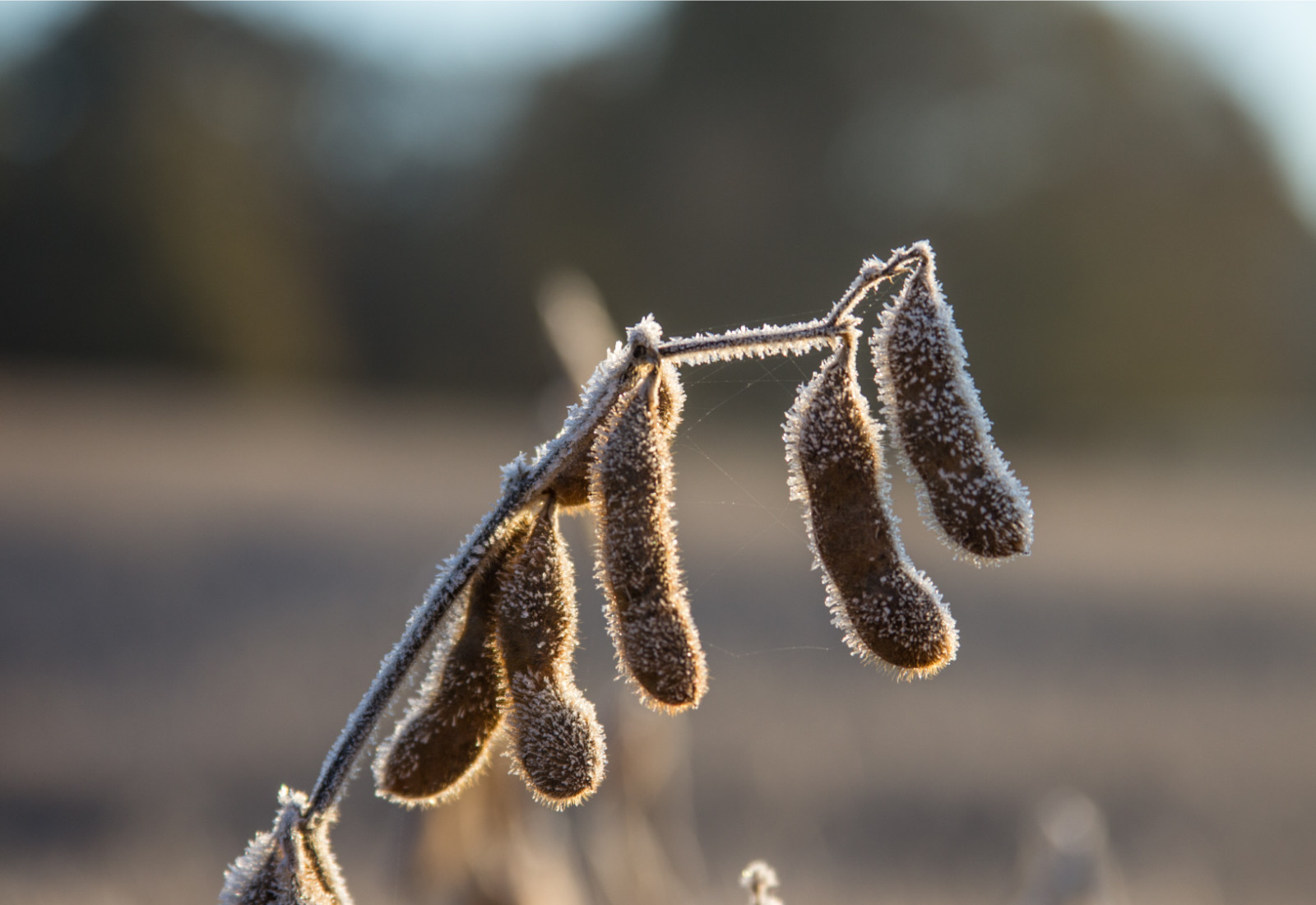Frost and Soybeans

Written by Kayla Graham
Fall across Western Canada can be an unpredictable affair. Its onset may come far before we’re ready for it in the form of early frost, or even snow. It’s not uncommon to see early lower temperatures by the second week of September across much of the Prairies.
The maturity stage of soybean crops will make all the difference in how well they’ll survive a frost. Generally speaking, frost in the later stages of growth is not as detrimental as frost in the early months of bean development, but there is still significant risk associated with fall frost. This is why choosing hybrids that fit your growing season is so crucial.
All growers will want to be timing their crops to be in the final stages of growth come September. However, late springs can impact planting date, so that isn’t always a possibility. The good news is that as long as crops have gotten past R6 growth stage, frost damage is not as damaging as it is in any of the stages before that. Although the soybean is very sensitive to any temperature below zero degrees Celsius, when a light frost encroaches on a field, the plant’s canopy acts as a shield for the growing pods underneath. A frost will kill the upper leaves, but may not penetrate further into the plant.
If beans are at R6 stage of growth, the pods are still forming to their mature state. If frost hits they will not form correctly and could even fall off the plant. The beans that are formed but still green will likely shrivel, which will reduce yield. They may also stay green even after dry down. A frost at R6 can be extremely damaging to a soybean crop. Best practice is to wait two days after the frost occurs before assessing for damage. By then, the damage should be fully visible.
If your crop has reached R7, generally the impact of frost is lessened. There can still be a yield loss associated with R7 frost, although it is far less than the yield loss that occurs at R6. Some farmers report a no per cent loss, while others report as much as five per cent on a damaged R7 field. Quality may still be negatively affected. By opening up pods you will be able to see if the bean has detached from the pod or not. If the seed is still attached, it will probably never turn yellow. If it has detached it may turn yellow but will take longer than usual time to do so. Frost on beans adds more moisture making the dry down process much more difficult.
Soybeans that get a dose of frost at the final stage of growth, R8, may not show a yield loss. Since the beans are already brown and rattling in pods, most of them are already detached and yellow, awaiting harvest. There are conflicting opinions about whether or not quality is impacted at this stage. Popular opinion is that as long as frost only occurs one time and is light overall, soybeans at R8 stage of growth should be ok.
Fall frost will always be a risk to Western Canadian soybean farmers. That’s why seed selection plays such a key role to bottom line. Monitoring weather patterns and seasonal information will go a long way in helping you choose soybean varieties that will reach maturity in your area.
Contact your DSM for tips on variety selection and coping with fall frost.



